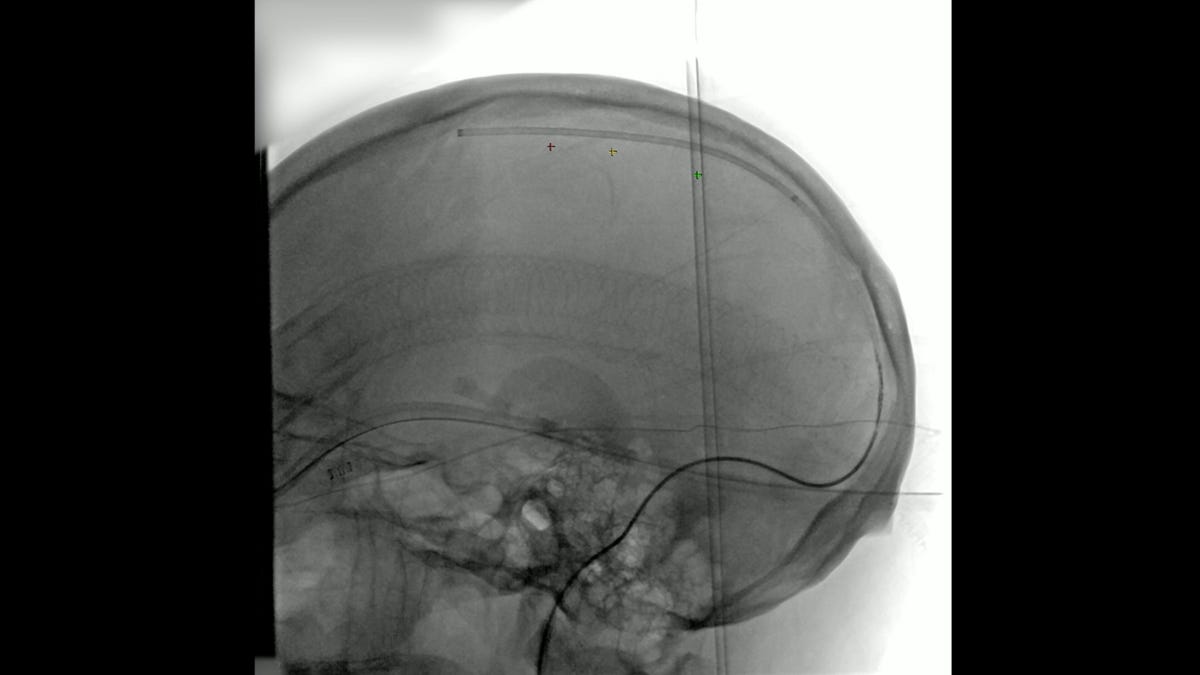
Watch this: Brain-Computer Interface: No Open Brain Surgery Required
The dream of controlling computers with brain waves, known as a brain-computer interface, or BCI for short, has been around for decades. So far, most of these technologies have primarily stayed within the domain of clinical trials and studies, especially when it comes to devices that are actually implanted inside the skull. Synchron aims to change that.
We visited Synchron to learn about its BCI called the Synchron Switch, how it works, how it gets into the brain without open brain surgery, and what it’s like to use.
Synchron CEO Tom Oxley demonstrates how the implant sits near the motor cortex, picking up brain signals that indicate the user’s intention to move.
Synchron CEO Tom Oxley explained how the company used preexisting medical technologies as a jumping-off point — in particular, the stent and the catheter, both of which are inserted into the body via the blood vessels.
“We enter into the jugular vein in the neck, make our way up to into the brain, then the stent opens up over that area of the brain called the motor cortex,” Oxley said. From there, the device “communicates wirelessly with the outside world to control personal devices.”
Synchron’s stent-based implant being inserted into the brain via the blood vessels.
The signals in the motor cortex express our brain’s intention to move. Antennas inside the Synchron Switch implant pick up those signals inside the brain, so that by thinking about moving parts of their body, users can control their devices to do things like texting, shopping, banking and more.
This is meant to help people living with paralysis caused by Lou Gehrig’s disease (amyotrophic lateral sclerosis, or ALS), stroke, injury, or other conditions that make touchscreens and computers inaccessible.
This demo brain is used for training by doctors before they go on to perform the procedure in human beings.
There have been 10 people so far who have received a Synchron Switch implant, and the company says it’s wrapping up its current round of clinical testing. One more round, known as a pivotal trial, will be required before Synchron can get market approval from the US Food and Drug Administration.
Oxley says that using blood vessels as a less-invasive path inside the brain could also impact other neurological treatments, such as deep-brain stimulation for Parkinson’s Disease and seizure monitoring for people living with epilepsy.
To see a demo of how the Synchron Switch implant is inserted into the brain, check out the video in this article.
